- Nuclear workers accept their fate 'like a death sentence'
- Fears for their health as one expert says it is 'perhaps a suicide mission'
- Radiation levels rise in Japan as crisis continues
- Power will be connected to knocked-out coolant pumping system 'within hours'
- Radioactive steam still billows from reactors and fuel storage pools after helicopter missions
- Police water cannons move in to spray overheating fuel rods
- Radioactive plume to hit U.S. west coast tomorrow
- 17,000 British nationals could be evacuated as last-ditch efforts are made to stop nuclear catastrophe
- Foreign Office provides free-of-charge rescue flights from Tokyo
- FO's new 'worst case scenario' says radiation in capital could harm humans
One of the 'Fukushima Fifty' said they were stoically accepting their fate 'like a death sentence'.
Another, having absorbed a near-lethal dose of radiation, told his wife: 'Please continue to live well, I cannot be home for a while.'
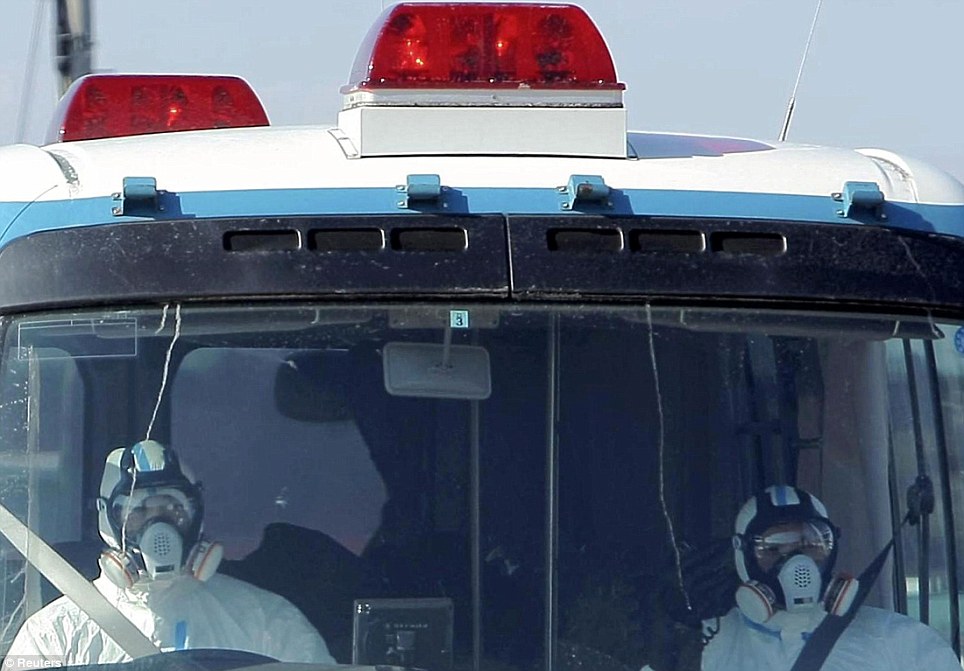
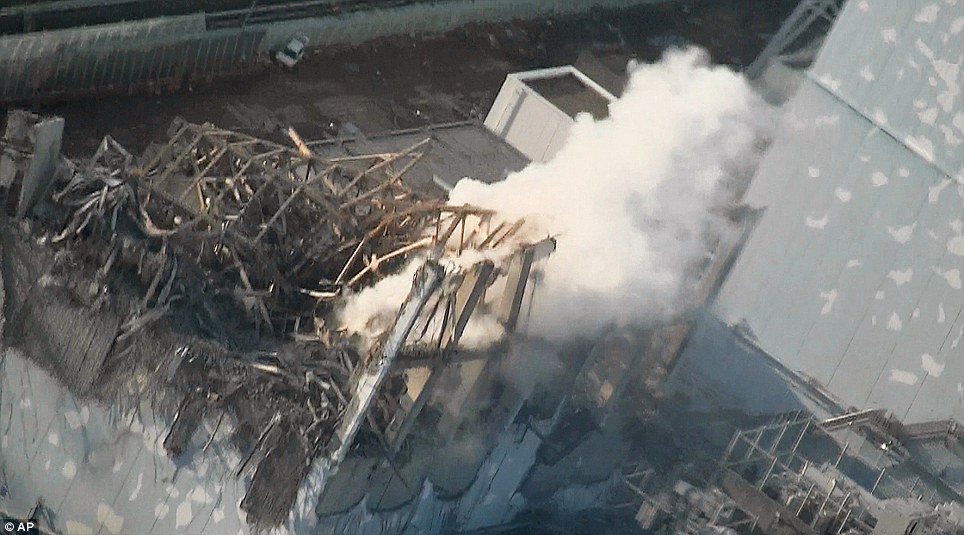
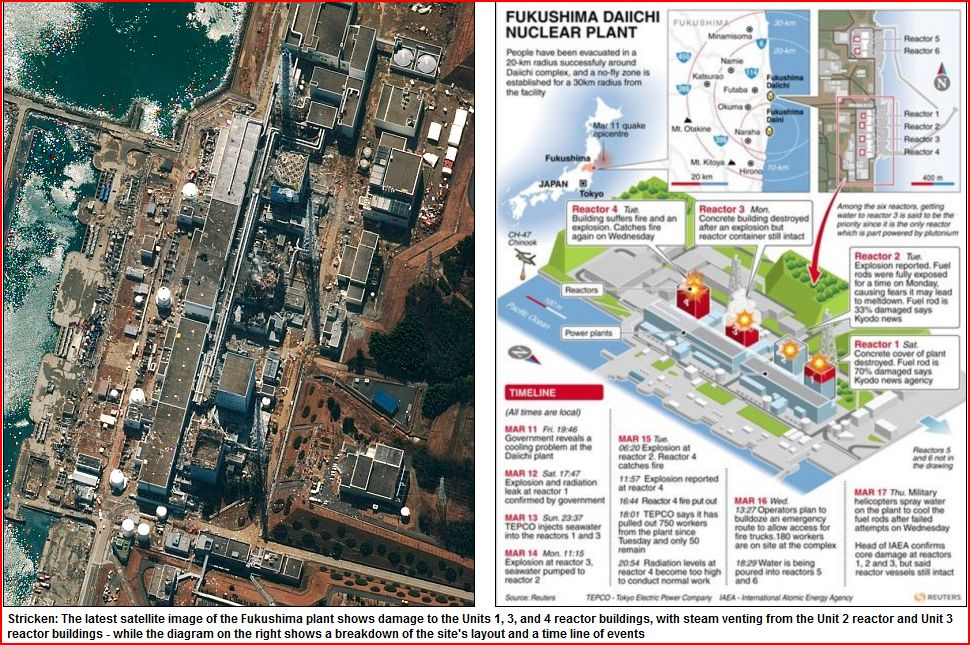
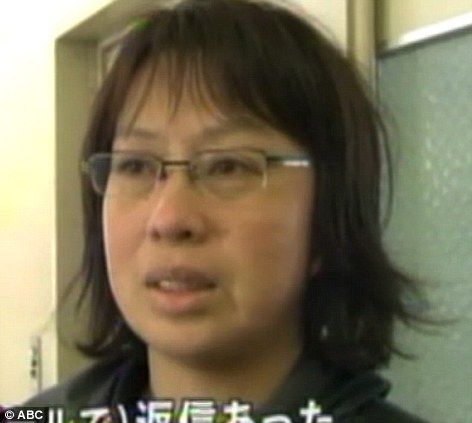
Experts have said that the airtight suits they are wearing would do little to stop the contamination.
The group remained behind after 700 of their colleagues fled when radiation levels became too dangerous.
Their identities have not been revealed, but experts said they are likely to be working class front-line technicians and firemen who know the plant the best.
It is thought that mostly older men have volunteered because they have already had children - younger workers might be rendered infertile by the high radiation doses.
Whilst the men are called the Fukushima Fifty, the group is thought to actually be 200-strong. They are doing four shifts in rotation, working on restarting the cooling systems.
Their heart-rending messages home were made public yesterday by Japanese national television, which has interviewed their relatives.
One relative said: 'My father is still working at the plant. He says he's accepted his fate, much like a death sentence.'
A woman said her husband who was at the plant had continued to work while fully aware he was being bombarded with radiation.
Another said that her 59-year-old father had volunteered for Fukushima duty, adding: 'I heard that he volunteered even though he will be retiring in just half a year and my eyes are filling up with tears.
'At home, he doesn't seem like someone who could handle big jobs. But today, I was really proud of him. I pray for his safe return.'
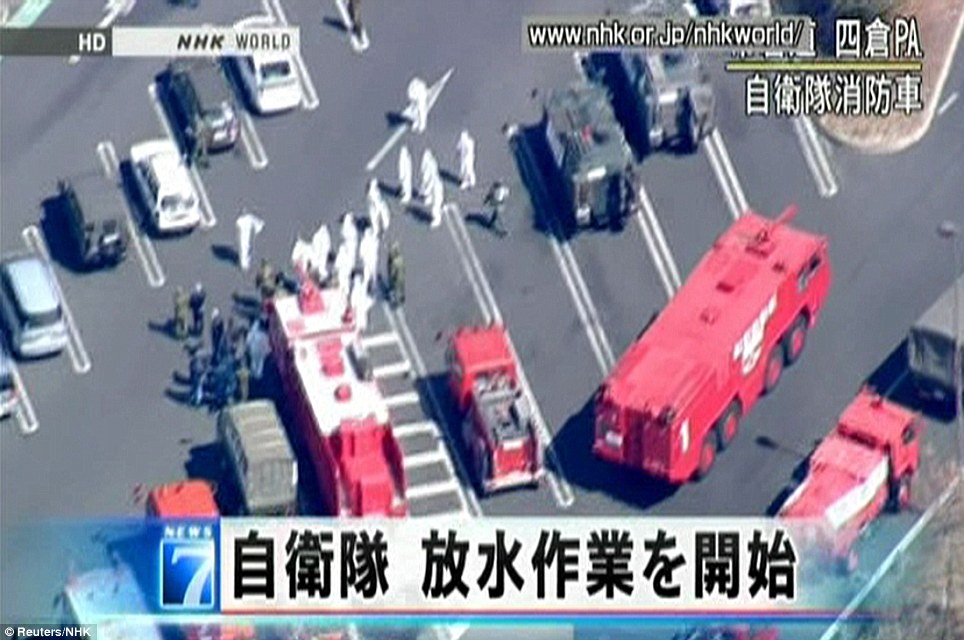
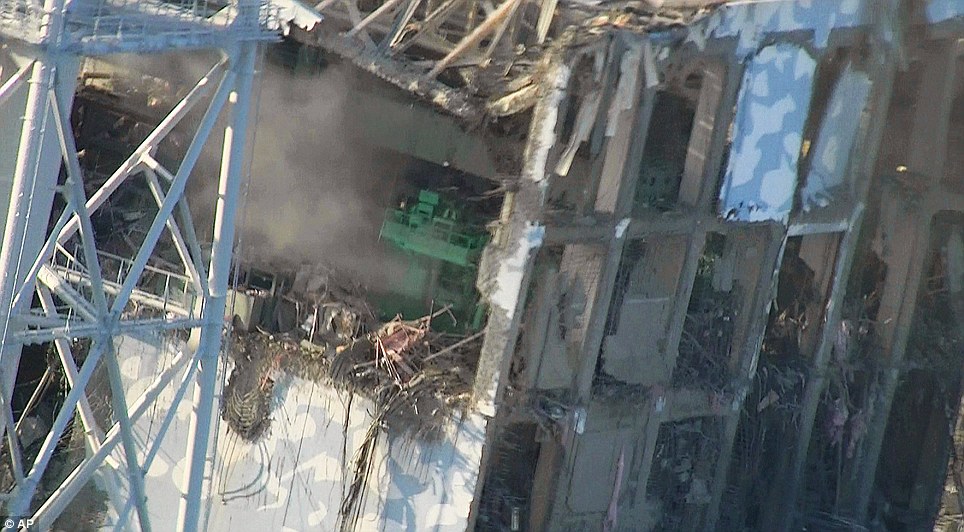
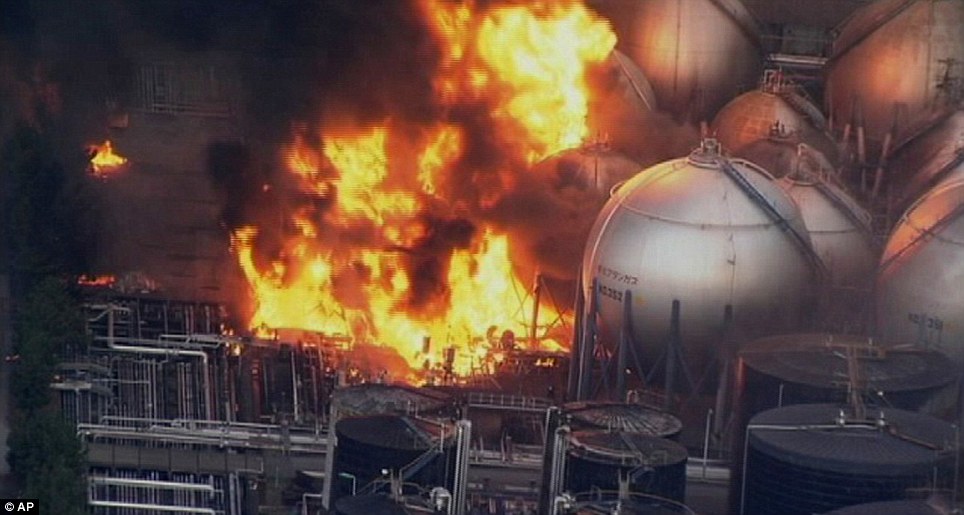
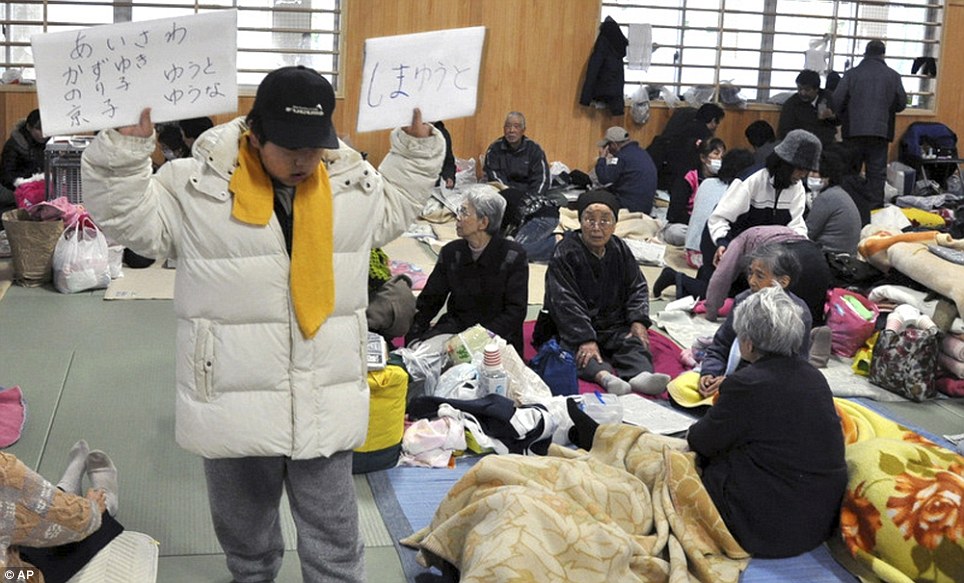
Another girl whose father worked at the Fukushima reactor said: 'I have never seen my mother cry so hard'.
She wrote on Twitter: 'People at the plant are struggling, sacrificing themselves to protect you.
'Please, Dad, come back alive.'
Of those who have stayed behind, five are known to have died already and two are missing. At least 21 others have been injured. A female worker who claimed to have been on duty in the Fukushima No 2 reactor when the tsunami struck posted her account of what happened on the internet.
Michiko Otsuki, who has since sought safety, wrote on a Japanese social networking website translated by The Straits Times: 'In the midst of the tsunami alarm at 3am in the night when we couldn't even see where we were going, we carried on working to restore the reactors from where we were, right by the sea, with the realisation that this could be certain death.
'The machine that cools the reactor is just by the ocean, and it was wrecked by the tsunami. Everyone worked desperately to try to restore it.
'Fighting fatigue and empty stomachs, we dragged ourselves back to work.
'There are many who haven't got in touch with their family members, but are facing the present situation and working hard.'
Dr Michio Kaku, a theoretical physicist, told the U.S. TV network ABC that the situation had worsened in the last day.
'We're talking about workers coming into the reactor perhaps as a suicide mission and we may have to abandon ship,' he said.
Michael Friedlander, who has worked in crisis management at similar American nuclear plants, added the workers were probably eating military-style rations and drinking cold water to survive.
'It's cold, it's dark, and you're doing that while trying to make sure you're not contaminating yourself while you're eating,' he said.
'I can tell you with 100 per cent certainty they are absolutely committed to doing whatever is humanly necessary to make these plants in safe condition, even at the risk of their own lives.'
Britons flee as desperate efforts to cut radiation fail - By David Derbyshire
Japan was running out of options to halt its nuclear crisis last night after attempts to waterbomb its overheating reactors by helicopter failed.
In a sign of growing desperation, the army was called in to cool the atomic waste stored at the Fukushima power plant with high pressure water cannon.
But radiation levels rose even higher.
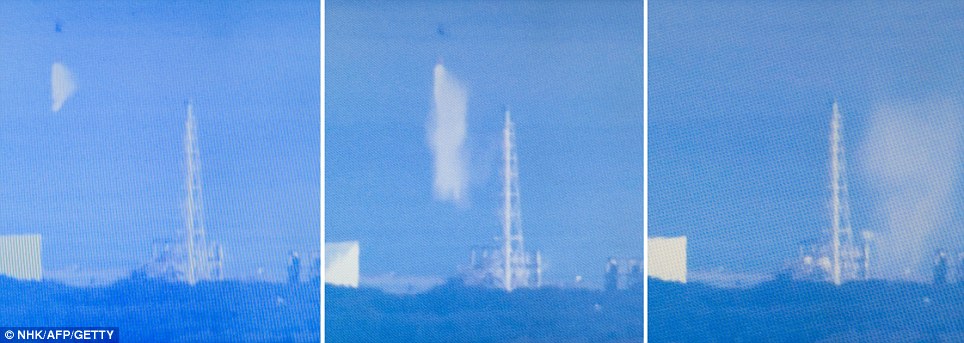
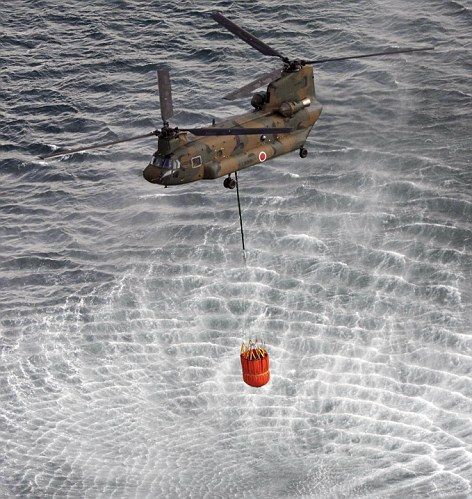
As the crisis entered its eighth day, the Japanese government was facing growing international condemnation for its handling of the world's second worst nuclear disaster since Chernobyl and for the lack of information it is giving experts and the public.
Officials have declared a 12-mile evacuation zone around the plant on the north eastern coast. Another 140,000 people living within 18 miles have been told not to leave their homes.
But Britain, which is pressing Japan to be more open about the disaster, has advised citizens to give the area a 30-mile berth and to quit Tokyo nearly 150 miles to the south.
Yesterday thousands headed to Tokyo's airport to leave the country for whichever destination they could find.
Two Foreign Office-ordered chartered flights, with almost 600 seats, begin their work today to bring Britons home.
America, France and Australia are also advising nationals to move away from the plant.
A week after the earthquake and tsunami, authorities are still struggling to bring it back from the brink of disaster.
Four of six nuclear reactors at the site have been hit by explosions and fires which have sent clouds of low-level radiation into the air.
The team of exhausted workers battling to prevent meltdown at the site - dubbed the 'Fukushima Fifty' - are unable to approach the most badly damaged reactors because radiation levels are so high.
Yesterday concern focused on two large tanks used to store spent nuclear fuel at Reactors 3 and 4.
Hydrogen explosions blew the roofs off both buildings earlier this week, leaving the pools exposed to the elements.
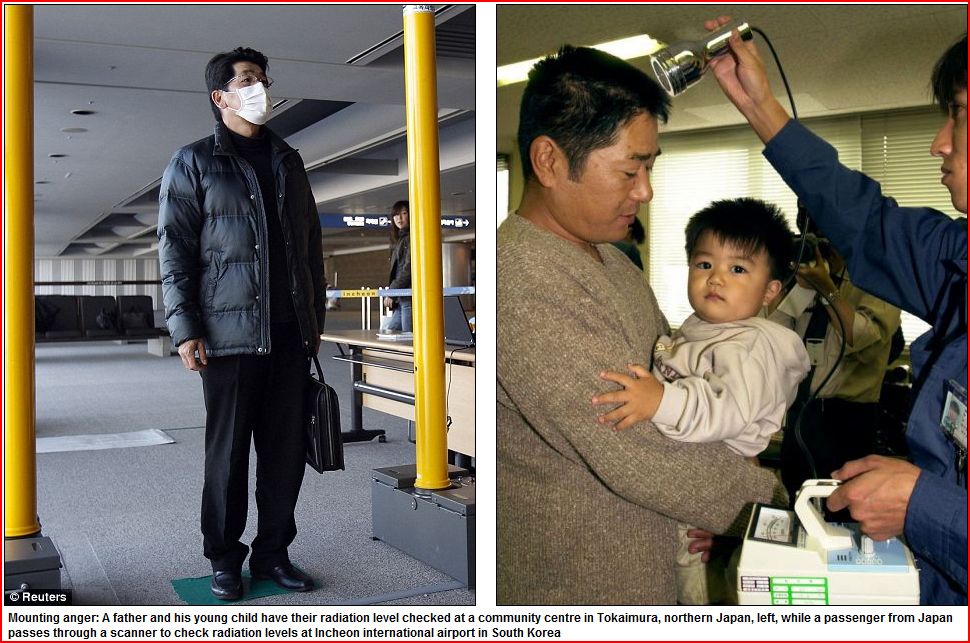
Water levels in the tanks have dropped dramatically in the last few days, possibly because of a leak caused by the earthquake. Waste in Reactor 3 is completely exposed to the air and is emitting alarming levels of radiation as it heats up.
Unlike the other reactors which use uranium, Reactor 3 uses a mixture of uranium and plutonium. Plutonium, best known as an ingredient in nuclear weapons, is particularly dangerous if released into the environment.
In the worst case scenario, exposed fuel will melt, triggering a chemical explosion that will send radioactive dust hundreds of yards into the air.
Chinook helicopters flying at less than 300 feet dropped four loads of water over the wrecked building in the hope that some water would seep into the dried-out pool and cool the fuel.
However, footage suggested much of the 2,000 gallons of water missed its target.
Later, six fire engines and a water cannon tried to spray the building with 9,000 gallons of water from high pressure hoses.
However, radiation levels within the plant rose from 3,700 millisieverts to 4,000 millisieverts an hour immediately afterwards.
People exposed to such doses will suffer radiation sickness and many will die. Today Tokyo Electric Power, which owns the plant, will try to restart the reactor's cooling systems after workers connected a half mile long power cable from the national grid to Reactor 2.
Spokesman Teruaki Kobayashi said: 'This is the first step towards recovery.'
He added: 'We are doing all we can as we pray for the situation to improve.'
Last night 14,000 were confirmed dead or missing in Japan and 492,000 are homeless.
There are 850,000 households in the north of the main island without electricity in freezing temperatures.
A radioactive plume from the crippled Japanese nuclear reactor could reach the west coast of America and Hawaii as soon as today, according to a United Nations forecast.
The chilling prediction was tempered by claims that the toxic cloud will have largely dissipated by the time it reaches California and the Pacific Northwest.
Experts insisted last night that they were confident the amount of radiation would be well within safe limits.
But with so much confusion surrounding the crisis at the Fukushima plant, there was still concern in the U.S. over the possible fallout.
There has already been a run on potassium iodide pills, which can protect the thyroid gland from radiation and cancer.
The UN data assumes that radiation is spewing from the wrecked nuclear reactor at a continuous rate and forms a rising plume.
The radiation is expected to head into Southern California and further into Nevada, Utah and Arizona.
It could be blown the 5,000 miles across the Pacific Ocean through next week, increasing radiation levels.
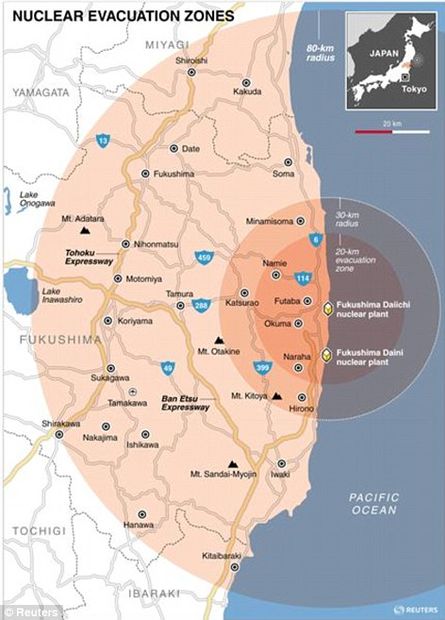




IT WILL NOT BE STOPPED...IT CANNOT BE HELPED...